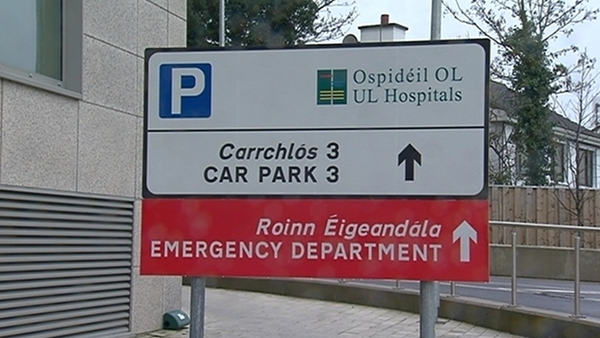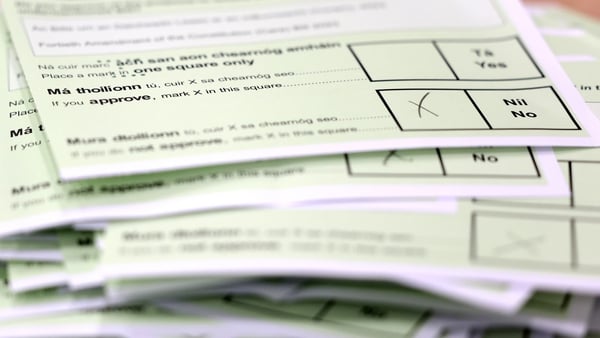Commuter traffic has barely decreased since the Government asked people to return to remote working last month.
Transport Infrastructure Ireland has confirmed that the number of cars on the Irish road network is within 1% of pre-pandemic levels.
On 11 November, the National Public Health Emergency strongly advised the Government that people work from home, where possible, and that employers be supportive of the move.
A few days later, Taoiseach Micheál Martin announced a series of measures aimed at slowing the spread of Covid-19, including that people should work from home unless it is absolutely necessary that they attend their workplace in person.
Speaking on RTÉ's Morning Ireland, TTI Communications Manager Sean O'Neill said: "There has been a shift in traffic movements. In the full cycle of a day we are only down about 1% on the national network" when compared to pre-pandemic levels
More in-depth figures from TII reveal that between 7am and 10am - a time many people travel to work - there is little change in the numbers of cars on road, when days before and after the Government's announcement on the return to remote working are compared.
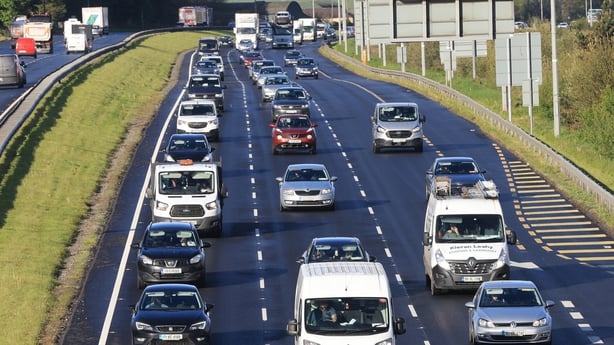
"Right across the country there is a minor decrease in the percentage range of about 2-3%, but we still have a lot of traffic out there right now. We don’t see a massive decrease," Mr O'Neill said.
"If you look at the time of travel, between 7am and 10am, those are the peak times in the morning and those are the times when, more than likely, people are going to work," he added.
Yesterday, TII's National Road Car Traffic Report showed there were 21,347 cars on the M50 at junctions 6 and 7 compared to 23,453 on 11 November.
On junctions 1 and 2 of the M50 near Dublin Airport, a total of 18,848 cars were recorded yesterday, compared to 20,266 on 11 November.
The report showed overall decreases in morning traffic volumes compared to a week earlier and a substantial increase as compared to traffic volumes to the same day in 2020.
We need your consent to load this rte-player contentWe use rte-player to manage extra content that can set cookies on your device and collect data about your activity. Please review their details and accept them to load the content.Manage Preferences
Car traffic just south of the border with Northern Ireland on the N1 at Jonesboro showed a -4% change as compared with Tuesday 23 November and a +42% change as compared to the same day in 2020.
In the case of the non-motorway border counter sites, traffic volumes today show changes of between 0% and +11% as compared with Tuesday 23 November.
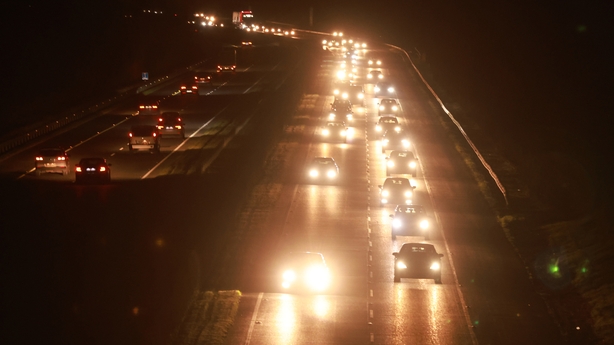
The changes in car traffic volumes since the same day in 2020 ranges from +5% on the N16 east of Manorhamilton to +31% on the N15 south of Lifford.
"Traffic volumes at the N2, N3, N13, N15 and N16 counters were lower than at the motorway traffic counters and are likely to display wider fluctuations in traffic figures than other traffic counters," TII said in a statement.
Traffic volumes on the radial routes into Dublin
Comparisons with 23 November 2021:
-2% on the M1 at M50 to Airport
-3% on the N7 at Citywest
-1% on the M11 at Bray
-4% on the M4 at Celbridge-Maynooth.
Comparisons with 23 November 2020:
+11% on the M1 at M50 to Airport
+11% on the M11 at Bray
+11% on the M4 at Celbridge-Maynooth
+7% on the N7 at Citywest.
The M50 (N3 Navan Road to N4 Galway Road) shows a -4% change as compared with Tuesday 23
November and a +4% change compared with the same day in 2020. Due to a road incident on the M50 this morning, the traffic counts were impacted.
In the case of the regional cities the changes in car traffic volumes this morning as compared with Tuesday 23 November:
N6 Galway -5%
N40 Cork -3%
M9 Waterford -3%
M7 Limerick -4%.
Comparisons with the same day 2020:
N6 Galway -6%
N40 Cork -7%
M9 Waterford +4%
M7 Limerick +10%.
Passenger numbers for public service transport operators - including Dublin Bus, Bus Éireann, Luas, Iarnród Éireann (Irish Rail), regional bus services and local link services - also saw small decreases since the announcement on remote working.
National Transport Authority figures for 11 November show 655,000 people using public transport on that day all across Ireland, compared to 637,000 last Thursday.
In Dublin city, there were similar decreases. About 350,000 used these transport services last Thursday, compared to 369,000 on 11 November.
Director of Public Transport Services with the National Transport Authority Tim Gaston said the figures are unsurprising.
"We have seen a slight decrease in people using public transport with more office workers not coming in to the office and working from home, but interestingly people are still using public transport for lots of other things. At weekends we are almost as busy as we were pre-Covid in many parts of the network," said Mr Gaston.
"Commuter services would be the hardest hit. Irish Rail over the last two weeks would have seen a 10% or more reduction," he added.
NTA figures also show there was a drop in Luas passenger numbers. 96,704 used the Luas last Thursday compared to about 107,236 on 11 November. The average daily passenger number was about 120,000 before the pandemic.
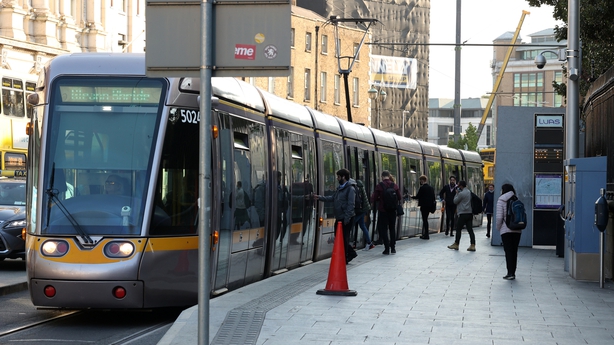
"Numbers have dropped. We have noticed a small difference between this time and a number of weeks ago where people are obviously heeding the rules to work from home.
However, whilst it's a small drop, it's a change in the pattern of people’s travel. It is no longer as crowded in peak time in the morning as it was in the past," Transdev spokesperson Dervla Brophy said.
Iarnród Éireann saw drop in commuter passengers of about 10% in the past two weeks. It had 83,000 passengers on its services on 11 November, compared to 76,000 last Thursday.
Dublin Bus saw 314,000 use their buses last Thursday, compared to 331,000 on 11 November.
Dublin city centre footfall in the first week of November was 2.3 million.
Footfall last week was also 2.3 million.
Dublin Town, which represents traders, said this represents a drop in trade because footfall should be increasing on the run up to Christmas.
It added more workers are working remotely and this is impacting businesses in the city centre.



